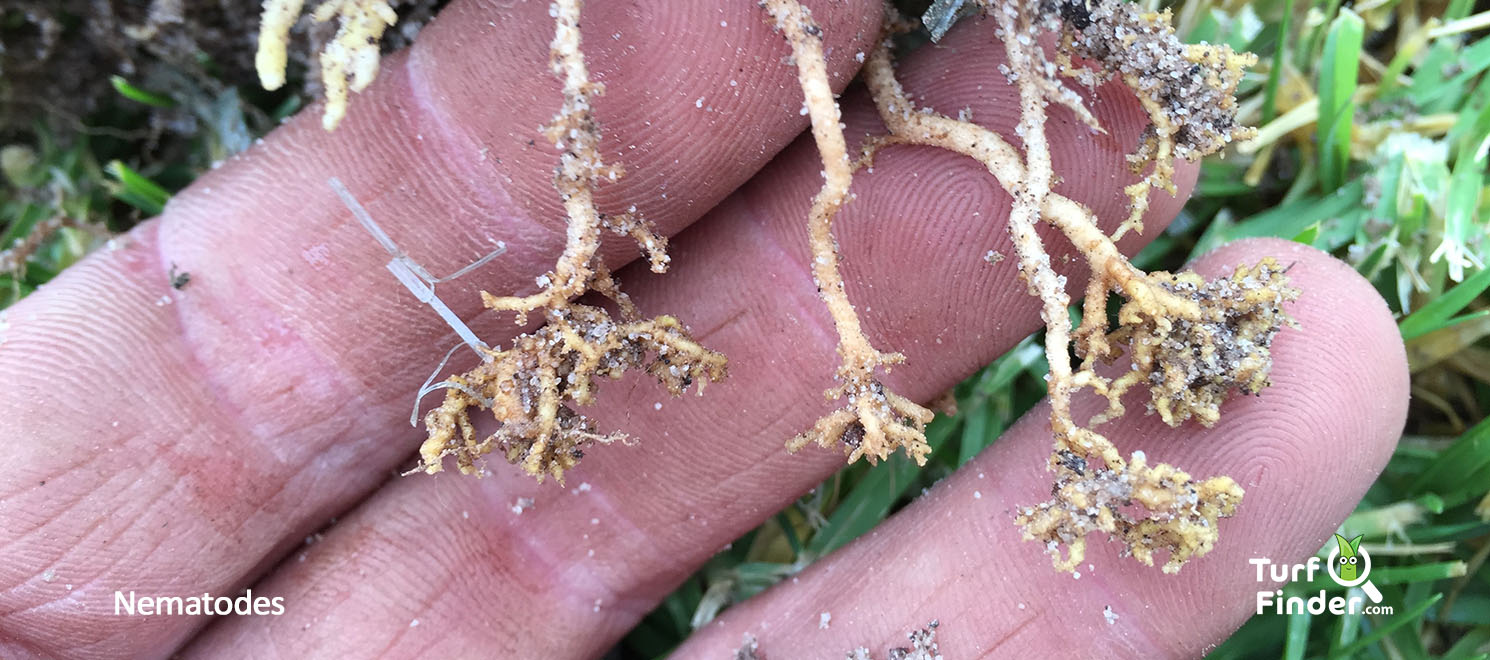Other common names:
Other common names here.
Description:
Soil testing is required to identify if nematodes are a problem and their threshold levels also. Low levels of nematodes can effect root health, yet turf quality and density may be acceptable. Following is a list of different nematode species found within Australian turfgrass and their threshold levels as identified following laboratory testing within 200ml of soil. Listed is the common name, species scientific name and threshold value for each (source Westgate Research Pty Ltd):
Ectoparasitic Nematodes
Below are a list of Ectoparasitic nematodes which feed on the outside of the plant. They are arranged from the smallest, being a Pin nematode at >0.4mm body length, to the largest being Sting nematode at > 1.5mm body length.
- Pin - Paratylenchus - 2000
- Ring - Macroposthonia etc. - 200
- Stubby - Paratrichodorus - 150
- Spiral - Helicotylenchus - 2000
- Reniform - Tylenchorhynchus - 400
- Sheath - Hemicycliophora - 300
- Lance - Hoplolaimus - 200
- Dagger - Xiphinema - 300
- Needle - Paralongidorus - 200
- Sting - Ibipora lolii - 10
Endoparastic Nematodes
- Cyst - Heterodera - 200
- Root-knot - Meloidogyne - 200
- Lesion - Pratylenchus - 200
Susceptible Turf:
Warm-and cool-season turfgrasses.
Symptoms:
- Poor turf growth including chlorosis and turf thinning.
- Root knot nematode - yellowing and stunting of turf foliage, knots and galls present on turf roots and swelling of roots. A major problem once established and may decline seasonally (Neylan, 1996).
- Root lesion - Causes significant damage but can't reproduce on grasses (Neylan, 1996).
- Dagger nematode - Causes significant damage (Neylan, 1996).
- Spiral nematode - Causes damage but only in high numbers (Neylan, 1996).
- Sting nematode - yellowing and stunted turf canopy growth. Lance nematode - stunting of top growth.
Control options:
- Pesticides: See available tabs below for registered products. Use as per label instructions.
- Integrated Pest Management (IPM): Entomopathogenic (beneficial) Nematodes (ENs) can be used to control other turf pests.Use a combination of approaches listed on this page.
- Cultural: Fungi trap and kill nematodes, which can be harmful for turf. Consider reducing the amount of nitrogen fertiliser being applied. Applying high levels of Nitrogen mean that the fungi no longer need to worry about killing and absorbing the nematodes.
- Mechanical: Nil.
References:
Eisenback, J.D. (2002) Identification Guides for the Most Common Genera of Plant -Parasitic Nematodes. Mactode Publications : Virginia. Neylan, J. (1996) TU201 Final Report: Nematode types and levels in bowling greens, Horticulture Australia funded project, pp. 33.
Disclaimer:
Turf Finder or its developer accepts with no responsibility for any consequences whatsoever resulting from the use of any information or product(s) listed herein. Products are to be applied as per label instructions.
